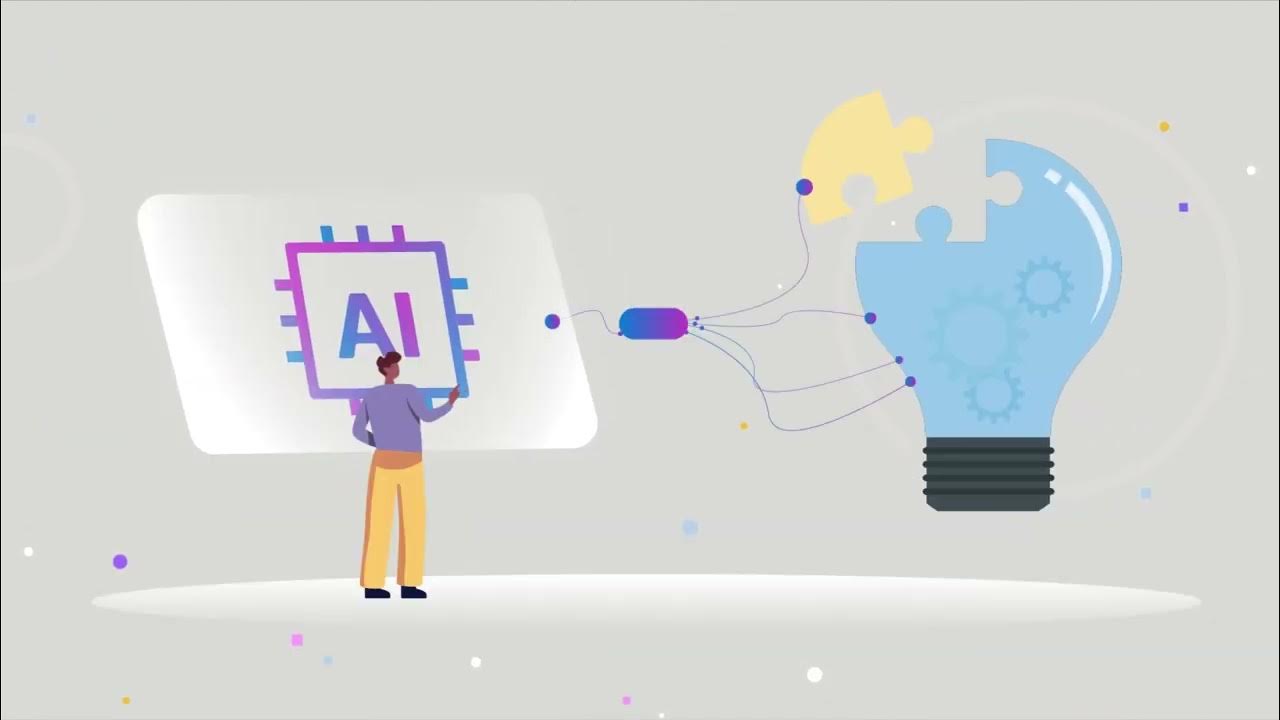The Essential Main Ideas of Neural Networks
Summary
TLDRThis video explains neural networks, which identify patterns in data to make predictions, using the analogy of fitting a 'green squiggle' to a dataset. It introduces core neural network concepts like nodes, connections, hidden layers, and activation functions. Though neural networks seem complicated, they are essentially 'big fancy squiggle fitting machines' that use basic math operations on bent lines to generate new shapes. By adding and manipulating these shapes, neural networks can model incredibly complex datasets for machine learning tasks. This friendly beginner's guide aims to demystify neural networks by breaking things down step-by-step.
Takeaways
- 😀 Neural networks fit squiggles to data to make predictions
- 👉 Nodes are connected in layers to transform activation functions into new shapes
- 📈 Weights and biases parameterize connections to reshape activation functions
- 🔍 Looking inside the neural network black box demystifies how they work
- 📊 Backpropagation estimates optimal parameters by fitting the network to data
- ⚙️ More layers and nodes enable more complex squiggle fitting for tricky data
- 🧠 Neural networks were named by analogy to biological neurons and synapses
- ✏️ Simple math and labeled diagrams provide intuition into neural mechanisms
- 🎓 This tutorial series aims to develop deep understanding of neural networks
- 🚀 Even simple networks demonstrate the power and flexibility of the approach
Q & A
What is the goal of the StatQuest video series on neural networks?
-The goal is to take a peek inside the neural network 'black box' by breaking down each concept and technique into its components and walking through how they fit together step-by-step.
What type of activation function is used in the example neural network?
-The soft plus activation function is used in the example neural network.
Why are the layers between the input and output nodes called hidden layers?
-The layers between the input and output nodes are called hidden layers because their values are not directly observed in the training data.
What are the two key components that allow a neural network to create new shapes?
-The two key components are the activation functions, which create bent or curved lines, and the weights and biases on the connections, which reshape and combine these lines.
What is backpropagation and when will it be discussed?
-Backpropagation is the method used to estimate the parameters (weights and biases) when fitting a neural network to data. It will be discussed in Part 2 of the video series.
Why are neural networks called 'big fancy squiggle fitting machines'?
-Because their key functionality is using activation functions and weighted connections to fit complicated squiggly lines (green squiggles) to data.
What math notation is used for the log function in the video?
-The natural log, or log base e, is used in the math notation.
How many nodes are in the hidden layer of the example neural network?
-There are 2 nodes in the single hidden layer of the example neural network.
What are some ways you can support the StatQuest channel and quest on?
-Ways to support include subscribing, contributing to Josh's Patreon campaign, becoming a channel member, buying songs/merchandise, or donating.
Why are neural networks still called neural networks if nodes aren't really like neurons?
-They were originally inspired by and named after neurons and synapses back when they were first invented in the 1940s/50s, even if the analogy isn't perfect.
Outlines

This section is available to paid users only. Please upgrade to access this part.
Upgrade NowMindmap

This section is available to paid users only. Please upgrade to access this part.
Upgrade NowKeywords

This section is available to paid users only. Please upgrade to access this part.
Upgrade NowHighlights

This section is available to paid users only. Please upgrade to access this part.
Upgrade NowTranscripts

This section is available to paid users only. Please upgrade to access this part.
Upgrade NowBrowse More Related Video

How Neural Networks work in Machine Learning ? Understanding what is Neural Networks

What is a convolutional neural network (CNN)?

Jaringan Kompetisi dengan Bobot Tetap | Jaringan Syaraf Tiruan Pertemuan 10

Neural Networks Pt. 2: Backpropagation Main Ideas

Course 1 Video 1 Introduction to AI

Data Mining // Tecnologia em 3 Minutos #01
5.0 / 5 (0 votes)